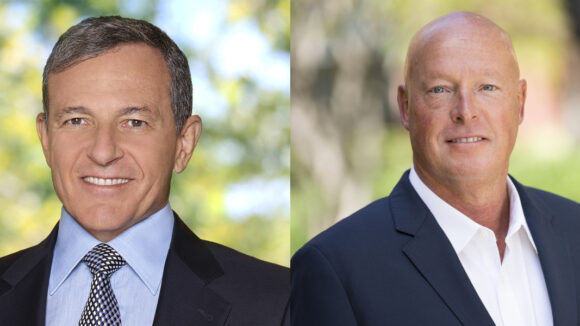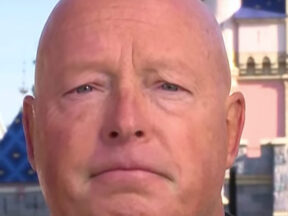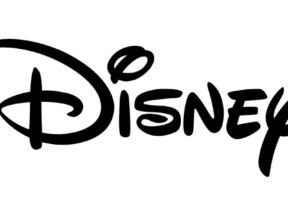

Bob Iger Made Bob Chapek’s Time As Disney CEO “About Three Years Of Hell,” Says New Report
Thanks to a new report by CNBC’s Alex Sherman, we now know far more about the tumultuous period from 2020-2022 when The Walt Disney Company’s CEO title went from Bob Iger to Bob Chapek and back to Bob Iger. It’s a period that Chapek reportedly referred to as “about three years of hell.”
The piece is based on more than two dozen conversations with people who worked closely with Iger and Chapek during that period. It’s a fascinating read that confirms some widespread rumors and introduces many new details about the relationship between the two Bobs, the perceptions of the board towards both men, and what could await the company when Iger’s contract runs out at the end of 2026.
Here are five takeaways from the report. The full piece is around 13,000 words long, so our list is hardly conclusive. It’s well worth checking out the full thing when you’ve got the time.
1 – First Big Fight
In February of 2020, Bob Iger stepped down and Bob Chapek took over as CEO. Then came the pandemic. In April, New York Times columnist Ben Smith wrote a story about how Covid-19 was affecting Disney. In that piece, Smith said Iger had “effectively returned to running the company.” Iger didn’t deny the claim and instead said that the magnitude of the crisis was so great that his stepping in to help Chapek navigate the situation was necessary. Chapek was furious and called Iger, telling him he didn’t need a savior. Those close to the situation say it was the first time in 20 years that the two Bobs had engaged in such a severe argument. Iger told several people that no colleague had ever spoken to him like Chapek did on that call.
2 – Left to Stew
The two continued to work together, although in a much more limited capacity. Their interpersonal issues were left unresolved. Iger and Chapek never participated in face-to-face mediation about their working relationship. According to CNBC’s sources, the board never demanded it, although executives did speak with each of the men independently about the situation.
Many times, over several months, Disney chairperson Susan Arnold told Chapek to be patient. She suggested letting Iger run creative for the duration of his contract and that in 18 months (when Iger’s contract was up), Chapek would be free to do things his way. Arnold also held private conversations with Iger, telling him that he should work to set Chapek up for success rather than publicly undermine him.
That undermining, at least in Chapek’s point of view, only got worse as time went on. In fact, Chapek later told a friend that his time in the role was “about three years of hell.”
3 – Chapek Tried to Make Disney a Tech Company
Chapek’s plan was to divide the teams that made shows and movies and those that sold them. It’s a setup used by other streamers. Netflix, Amazon, and Apple all have separate distribution and creative teams. Chapek believed that implementing something similar at Disney might move the company away from its outdated legacy media habits and get investors to start viewing Disney as a tech company. The thought was that investors are keener to back tech companies than traditional studios, broadcast tv, and cable operators. To that end, Chapek created Disney Media and Entertainment Distribution (DMED) and appointed Kareem Daniel to lead the division, an appointment that didn’t win over the Disney board and didn’t last beyond Chapek’s tenure.
4 – Downfall
In the first half of 2022, no stock in the Dow Jones Industrial Average performed worse than Disney, which dropped 40%. Chapek had worked hard to associate Disney, and more specifically Disney+, with other streaming giants like Prime Video, HBO Max, and the industry leader, Netflix. That association was a good thing when the other companies were doing well. However, in January 2022, Netflix’s subscriber growth stagnated, adversely affecting the other streamers.
Things went from bad to worse when CFO Christine McCarthy and Chapek took vastly different stances on the company’s upcoming November earnings report later in the year. In September, the duo informed board members about what the report would look like. During that preview, McCarthy surprised Chapek by providing a bleak forecast for the company. In a later session with the board, Chapek said that McCarthy’s financial management was off. He pointed out that Disney+ was still adding subscribers and that the company would be fine if the platform hit its goal of 215-245 million customers by the end of 2024.
When the November earnings call came, Chapek maintained his positive outlook, much to the dismay of McCarthy and other board members. The following day, company share prices dropped by 13%. Shortly after, the Disney board decided it was time for a CEO change, and only one person was on the list of possible replacements. Chapek was fired so quickly he couldn’t even send out a goodbye email, and Iger was back as CEO.
5 – Looking Forward
In July, Iger extended his contract to the end of 2026. It’s expected that Disney will choose his next replacement by early 2025, giving them two years to work under Iger and prepare for the role. About the same amount of time that Chapek had between learning that he was next in line and taking on the position.
We’ve already discussed the possibility of Disney splitting its business in two and why that might be attractive for Iger and crew. The CNBC report reiterates that a divided Disney would be much easier to sell and that many believe Apple might be interested.

.png)



